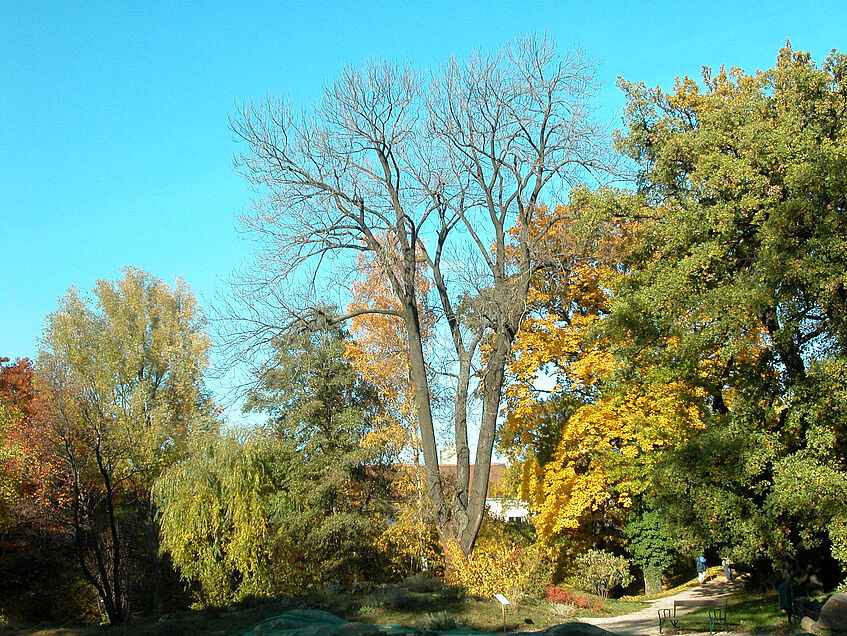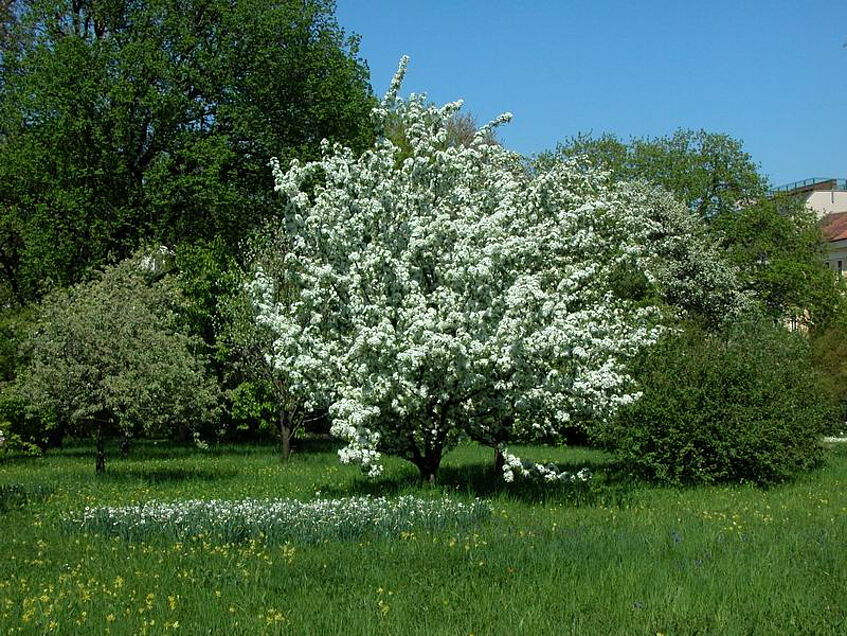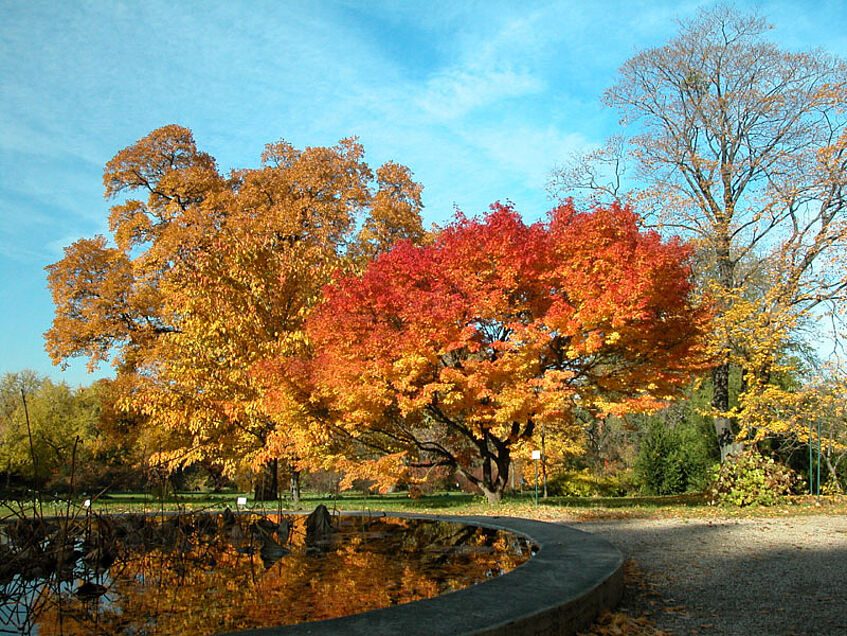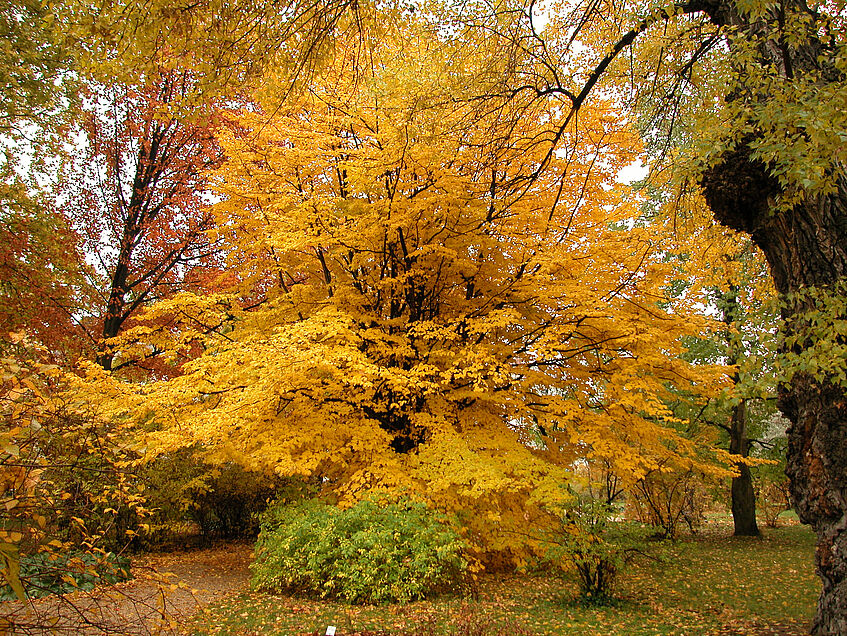Broad-leaved trees

Gehölzsammlung © HBV_R. Hromniak

Malus sp., Zierapfel © HBV_R. Hromniak

Acer palmatum, Fächerahorn © HBV_R. Hromniak

Parrotia persica, Eisenholzbaum © HBV_R. Hromniak
Location in the garden: areas 15, 29-31, 33, 35, 45, 46; and partially 28, 32, 38-41, 44, 47
The so-called broad-leaved trees collection mostly covers the southern part of the botanical garden areas 29-31, 33 and 34. The aisle along the main path is also part of this collection. Here predominantly angiosperm broad-leaved trees are displayed, in contrast to the conifers collection. Noteworthy examples are the European hop-hornbeam (Ostrya carpinifolia) and the new rhododendron garden. Large specimens of the maidenhair tree (Ginkgo biloba) are also found in this part of the garden.
Mowing of lawns within these display areas is carried out according to defined time schedules in order to present different meadow types with their characteristic species compositions.
The basic design of this area, following the landscape garden style, goes back to the middle of the 19th century. A large part of it stretches across Host's Garden, named after the botanist Nikolaus Thomas Host. The Host's Garden was the former private garden of the Habsburgs, which was incorporated into the HBV under the direction of Richard von Wettstein in 1930, but was not open to the public until 1970. Host's Garden was the "Garden of the Flora of Austria" during the time of the Habsburg monarchy. It therefore contains trees there that were indigenous to the imperial territory of that time, such as the European nettle tree, Celtis australis.
In the Groves collection you will find fewer broad-leaved trees than on the lawns of the Systematic Garden. Unlike the Systematic Garden, however, these plants are arranged ornamentally and not according to a taxonomic system.
The habitat conditions, as defined by climate, soil, and the geographical location of Vienna at the eastern border of the Pannonian climate zone (and also urban climate influences) provide good growth conditions for thermophilic plants preferring lime-rich soil, while problems are encountered with plants from cooler climates and from regions with more acidic substrates. The latter (e.g. rhododendrons) need particularly intensive horticultural care.
